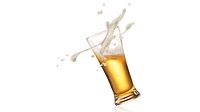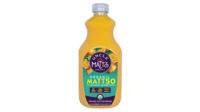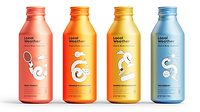2022 State of the Beverage Industry | Beer market turns to innovations during time of recovery
Premium offerings, FMBs outperform overall beer category

For the U.S. beer market, the road to recovery has the major players determined to innovate the category as it faces more competition from novelty beverage alcohol products.
“The U.S. beer market is in a moment of recovery following declines associated with the COVID-19 pandemic, lackluster international demand and heightened competition from ready-to-drink (RTD) cocktails,” said Grace Wood, industry analyst for Los Angeles-based IBISWorld, in Beverage Industry’s March eMagazine. “Consumers are demanding more variety and novelty, which is stimulating growth from regional and craft brewers.”
Brian Sudano, managing partner with New York-based Beverage Marketing Corporation (BMC), also noted in Beverage Industry’s March eMagazine the impact that novelty is having on beer as a whole. “The market continues to evolve with growth coming from alternative forms of malt beverages while traditional beer continues to contract,” he said.
Meanwhile, Kaleigh Theriault, beverage alcohol thought leadership manager for Chicago-based NielsenIQ, noted in Beverage Industry’s March eMagazine that with the exception of imported beer, U.S. off-premise beer sales across the board are in decline.
| COMPANY | DOLLAR SALES | % CHANGE vs PRIOR YEAR | CASE SALES | % CHANGE vs PRIOR YEAR | |
| 1 | Twisted | $723,387,324 | 23.7 | $21,064,949 | 19.6 |
| 2 | Smirnoff | $484,945,637 | 6.5 | $12,527,758 | 3.3 |
| 3 | Mike's Harder | $418,275,460 | 1.6 | $11,143,607 | -2.6 |
| 4 | Mike's Hard | $304,852,262 | -3.9 | $7,779,969 | -7 |
| 5 | Seagram's Escapes | $198,809,365 | -1.6 | $7,135,328 | -4.7 |
|
|
Category Total* | $3,253,564,633 | 5.2 | $88,896,339 | 0.7 |
*Includes brands not listed
Source: Information Resources, Inc. (IRI), Chicago. Total U.S. supermarkets, drug stores, gas and convenience stores, mass merchandisers, military commissaries, and select club and dollar retail chains for the 52 weeks ending May 15.
“This leads us to the conclusion that beer drinkers are looking for premium options and new and exciting alternatives in the off-premise,” Theriault explained. “When looking at how the segment has fared in the last two years, craft, imported and domestic super-premium beers all saw substantial growth, while below premium, domestic premium and malt liquor experienced declines reaching as low at 21.5% since 2019.
“We can attribute these trends to the pandemic-related health and wellness revolution, which caused shoppers to seek out innovative, ‘better-for-you’ beverage alcohol offerings (i.e., non-alcoholic beer, hard seltzer, hard tea, etc.),” she continued. “Additionally, consumers’ new priorities for maintaining wellness caused 22% to cut back on overall alcohol consumption according to a recent NielsenIQ’s Omnibus Survey. Overall, we expect sales to continue to revert to 2019 levels as consumers shift from a pandemic to an endemic mindset.”
In BMC’s report “Beverages 2022: What’s In Store?,” the market research firm predicts that beer in 2021 saw volume decline 0.2%. In terms of the total adult beverages share, BMC estimates that beer accounts for a 39.4% of the 142.8 billion servings in total adult beverages.
According to Chicago-based Information Resources Inc. (IRI), total beer sales were down 2.5%, totaling more than $43.8 billion, for the 52 weeks ending May 15 in total U.S. multi-outlets. Case sales for beer struggled even more with it being down 6.6%.
Among the segments, total domestic beer was down 6%, totaling $26 billion, with volume down 9.2%. Within those sub-segments, domestic premium beer sales were down 6.5% and domestic sub-premium sales was down 7.5%. Domestic super-premium fared the best, but sales still were down 0.3%, according to IRI data.
| COMPANY | DOLLAR SALES | % CHANGE vs PRIOR YEAR | CASE SALES | % CHANGE vs PRIOR YEAR | |
| 1 | Bud | $6,588,105,368 | -7.9 | $289,185,672 | -10.9 |
| 2 | Michelob | $3,380,872,460 | 3.9 | $120,255,013 | -6.4 |
| 3 | Coors | $2,623,283,336 | -3.2 | $116,680,510 | -6.4 |
| 4 | Miller Lite | $2,107,882,974 | -5.5 | $95,632,317 | -8.6 |
| 5 | Busch | $1,729,351,026 | -0.2 | $99,189,726 | -4.4 |
|
|
Category Total* | $26,041,969,165 | -6 | $1,086,770,921 | -9.2 |
*Includes brands not listed
Source: Information Resources, Inc. (IRI), Chicago. Total U.S. supermarkets, drug stores, gas and convenience stores, mass merchandisers, military commissaries, and select club and dollar retail chains for the 52 weeks ending May 15.
This comes as domestic beer continues to be challenged by ready-to-drink (RTD) competitors as well as flavored malt beverages (FMBs).
“Younger consumers have been moving much of their volume away from traditional beer and beer overall,” Sudano said in Beverage Industry’s March eMagazine. “This has driven brewers to compete across categories. [Anheuser-Busch InBev] and Molson Coors now are competing in RTDs across all beverage alcohol formats. Nearly all the innovation is taking place in FMBs and RTDs. These formats have also supported traditional cocktails when out of home. With competition from spirits and wine-based brands on the RTD side and the strength of spirit marketers, we project domestic beer declines to accelerate over the next few years.”
FMBs meanwhile continue to exhibit growth as sales increased 5.2%, totaling $3.2 billion, with case sales up 0.7%. Beer seltzer centric also has become a stronger segment in beer. According to IRI data, beer seltzer centric was up 2.3%, totaling $4.4 billion in sales for the 52 weeks ending May 15; however, case sales were down 1.7%.
“Consumers are focused on three top trends: convenience, experience, and health and wellness,” Theriault said in Beverage Industry’s March eMagazine. “FMBs offer convenient consumption in a can, as well as an exciting experience through flavor and style innovations, especially among hard seltzers. As mentioned before, consumers renewed priority for maintaining health and wellness is largely driving trends across the beverage alcohol industry, and there seems to be a beverage for all types of consumers, whether they’re gluten-free, looking for low-carb options, no added sugar, etc.”
These trends will likely be a vital role in future innovations hitting this market, experts note.
“Building on the previous point, we’re going to see innovation in health and wellness offerings and can expect more brands to enter the hard seltzer, hard tea, hard kombucha, low-calorie beverages, low/non-alcoholic, etc., spaces,” Theriault said in Beverage Industry’s March eMagazine.
Looking for a reprint of this article?
From high-res PDFs to custom plaques, order your copy today!







